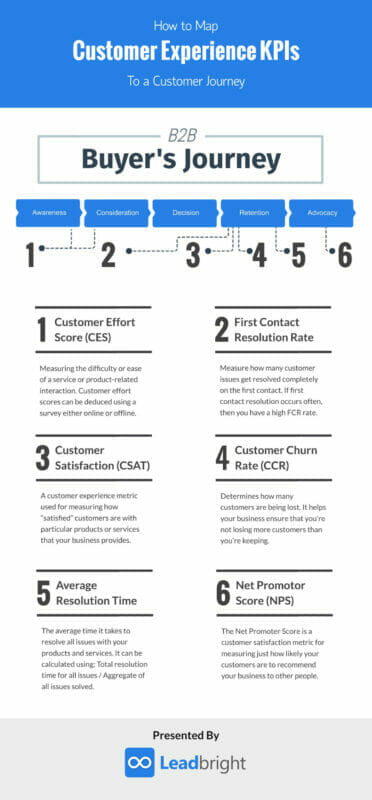Measuring Customer Experience: Key Metrics and Tools

The correlation between CX and repurchasing is significant. When customers are satisfied with how you run your business and how you service them, everything else falls into place.
Clearly, a positive customer experience is beneficial to every business. Without the appropriate metric for measuring customer experience, most businesses are likely to fall under the illusion that customers are happy while missing out on all the valuable instructive information that customer feedback provides.
For example, this survey by Bain & Company revealed that 80% of companies believed they delivered quality customer experience — when only 8% of customers truly enjoyed customer experience.
The only reason those companies made that mistake was that they did not appreciate the importance of measuring customer experience.
This post gets you started on how to accurately measure customer experience using trusted and proven customer experience metrics.
What is customer experience measurement?
Customer experience measurement utilizes customer feedback tools to gather relevant data from customers to assess satisfaction levels and identify areas for improvement. Customer experience measurement should be done at every touchpoint throughout the customer’s buying journey
Why do we measure customer experience?
Positive customer experience is essential for many reasons including, but certainly not limited to increased customer satisfaction, increased sales, and stronger brand loyalty.
At the core of any customer experience conversation, the desire to put the customer first. That is no surprise there given that 90% of Americans heavily rely on customer service before doing business with any brand.
Customer experience, when correctly measured, can reveal all the areas where your business needs to change or improve on customer service.
Matching CX Metrics to a customer journey map
The whole point of CX metrics is to measure, analyze and use valuable customer feedback at every touchpoint between your business and customer, to improve customer experience.
The best way to do that is to first make sure you have mapped out your customer journey, and then apply some form of measurement to better understand if you are providing a great customer experience up until that moment of time. Keep on reading as we get into a few of the key CX measurement tools and where you should apply them within your customer journey.

How do you measure and analyze customer experience?
Objectively measuring customer experience is possible once you’re aware of the right metrics to use. Rather than guess what customers feel about your product or service, you can use these methods to collate what customers feel every time they come in contact with your brand;
Net Promoter Score (NPS)
The Net Promoter Score is a customer satisfaction metric for measuring just how likely your customers are to recommend your business to other people. Net Promoter Score (NPS) is perhaps the most popular customer experience metric because it measures a customer’s general feeling towards your business — as opposed to a particular product, service, or any specific thing.
NPS is calculated, first, by asking your customers a simple question — “On a scale of 1-10, how likely are you to recommend our business to a friend, family, or colleague?”
The next step will then be to classify the results into three groups — Detractors (0-6), Passives (7-8), and Promoters (9-10).
The final result of your NPS is the digit you get when you subtract the detractors percentage from the promoters percentage. A high NPS score is an accurate pointer to the fact that your customers are happy with your brand.
The information that an NPS survey provides is extremely valuable. For instance, you’d be able to tell exactly what number of customers are not fully satisfied from the passives list. Then you can pay more attention to them and easily convert them into promoters.
Position on the customer journey map:
NPS may be the first CX metric we explore (because it’s the most important), but on the customer journey map — it should be done last.
An NPS survey is most effective at any point on the customer journey map after purchase. Since the NPS survey reveals the overall feeling of a customer, there is likely to be a big room for error if it is conducted before the end of the journey.
First Contact Resolution Rate
First contact resolution rate is simply how you measure how many customer issues get resolved completely on the first contact. If first contact resolution occurs often, then you have a high FCR rate.
A good FCR rate is mostly industry-dependent. Differences in technology, business models, and brand vision may affect FCR rates for separate companies. That said, if your FCR rate is in the above 65% category, then you’re doing a good job.
Especially, for SaaS businesses, FCR is a valuable metric for measuring customer satisfaction. If customers need to contact customer support repeatedly to resolve an issue, then there’s a concern that those customers are not having the best experience and are likely to be detractors. (remember NPS?).
Position on the customer journey map:
Your customer is likely going to get in touch with you, in the event of any issue, after purchase. The more specific stage in the customer journey FCR is likely to occur is the “retention stage”.
A good FCR rate means good customer service and a strong product/service which ultimately leads to customer retention.
Customer Satisfaction (CSAT)
Customer satisfaction is a customer experience metric used for measuring how “satisfied” customers are with particular products or services that your business provides.
At the beginning of a buyer’s journey, expectations are created by the buyer. If the buyer’s expectations are not met, then they’re not having the best customer experience.
CSAT can be deduced through a CSAT survey asking the simple question — “On a scale of 1-10, how satisfied are you with our product?” The best time to conduct CSAT surveys is usually right before or after a significant touchpoint.
Take a software transcription service as an example. CSAT surveys can be sent at the following touchpoints; when the customer completes a transcription task using the trial version, when the initial subscription is made, when five transcription tasks have been completed and after contact with customer support.
What makes a good CSAT score also depends on the industry your business is focused on. The American Customer Satisfaction Index highlights the various customer satisfaction benchmarks for several industries.
Overall, a customer satisfaction score of 75% is an indicator of positive general customer satisfaction.
Position on the customer journey map:
Customer satisfaction surveys should be sent at every touchpoint starting from the decision to purchase.
CSAT surveys should be conducted at the point of purchase, end of the onboarding process, and at the end of every issue reported and resolved.
Customer Churn Rate
Customer Churn Rate (CCR) is a metric for determining how much your business loses customers. CCR is relevant because it helps your business ensure that you’re not losing more customers than you’re keeping.
Customer churn rate is calculated by dividing the number of churned customers over total customers — and multiplying the score by 100 to find the percentage.
On average, a good customer churn rate should be in the 2%-10% range. A higher churn rate could be indicative of poor customer service and will need to be rectified as soon as possible.
Position on the customer journey map:
Customer churn rate, as a CX metric, does not exactly concern any customer — it concerns every customer.
Churn rate analysis should be done when the “retention” stage has been completed by many customers within a period (monthly, quarterly, and annually).
Customer Effort Score (CES)
Customer effort score is a customer experience survey for measuring the difficulty or ease of a service or product-related interaction with a business.
Customer effort scores can be deduced using a survey either online or offline.
Sample CES questions include; How long did it take for you to set up your account? Did you find our services easy to use? How long did it take you to set up your account?
CES can be used to identify customer pain points and aspects of your business that require high efforts — and ultimately help you prevent customer churn.
Position on the customer journey map:
CES surveys should be done right from the “awareness” and “consideration” stages. At this stage of the customer journey, a CES survey will provide valuable insight as to the extent of improvement needed in your marketing and advertising strategies.
CES is also essential during product/service usage and after contact with customer support.
Average Resolution Time
Average resolution time means exactly what it sounds like — the average time it takes to resolve all issues with your products and services.
It can be calculated in this format; Total resolution time for all issues / Aggregate of all issues solved.
The data collated from your average resolution time can positively influence software updates, brand identity, and overall customer service.
Position on the customer journey map:
Like FCR, Average Resolution Time will be a valuable CX metric if it is conducted after customers contact customer service — which is also in the “retention” stage of a customer journey.
Which of these metrics is best at measuring the overall customer experience?
As cliche as it may sound, there’s actually no straightforward answer to that question. Every metric is relevant to measuring the overall customer experience.
But, if we were to pick the most important one. It would be the Net Promoter Score.
The NPS survey encapsulates the most prevalent feeling customers have about your brand. If they are willing to recommend your business to other people, rest assured they love your business — at least a significant part.
Other metrics may be misleading, but rarely NPS. Take CSAT for example, a customer might be satisfied with your service but may be unimpressed by your brand message.
Conclusion
The first line in this Forbes article on Customer Experience is apposite here:
“Customer experience may be about customers, but it is backed up by numbers.”
If measuring customer experience was left entirely to business owners to decide, the results will be highly subjective and false — because no one likes to receive negative feedback.
So, let CX metrics do that for you.
CX metrics help you “zoom-out” so you can objectively assess and answer the question — Are my customers happy with the services I provide?


